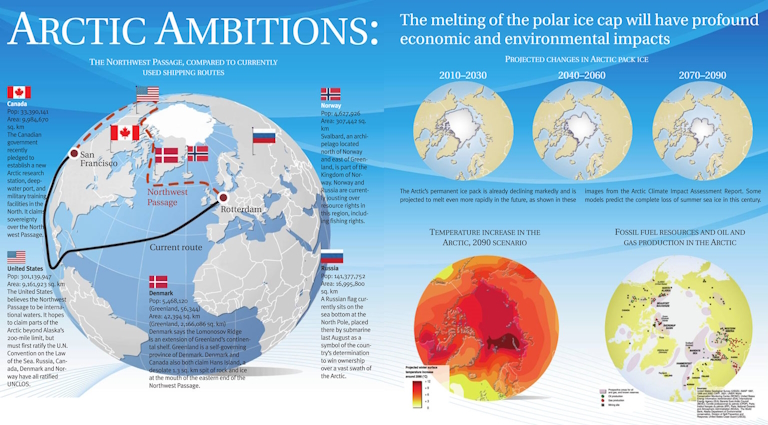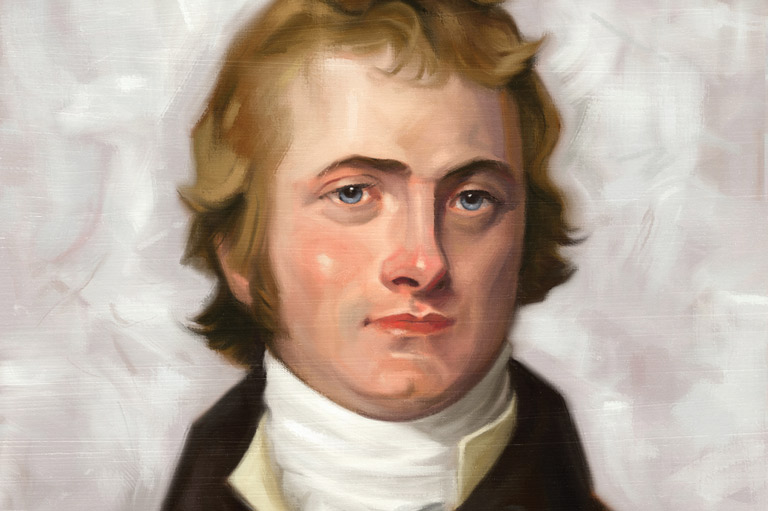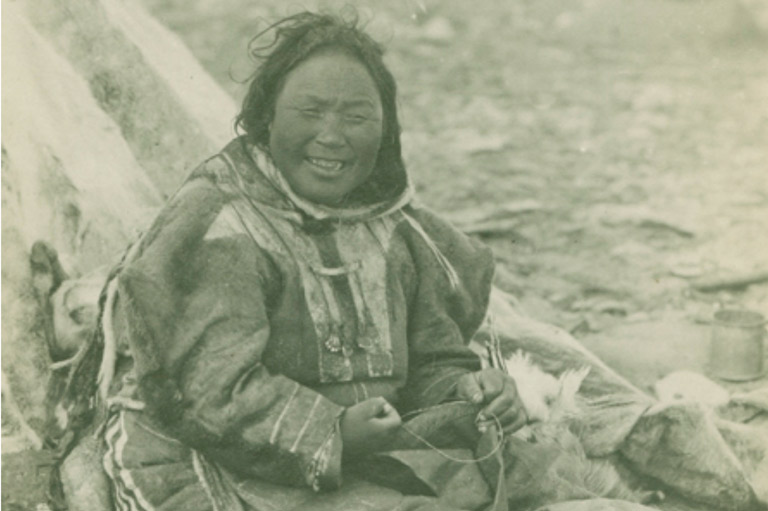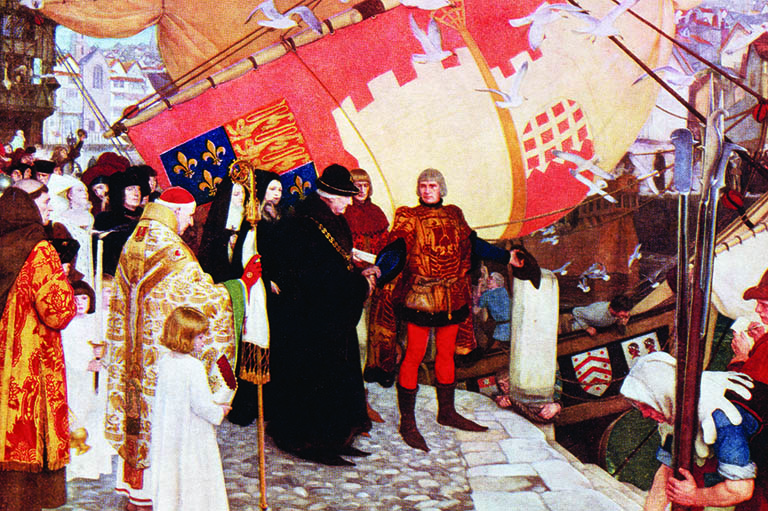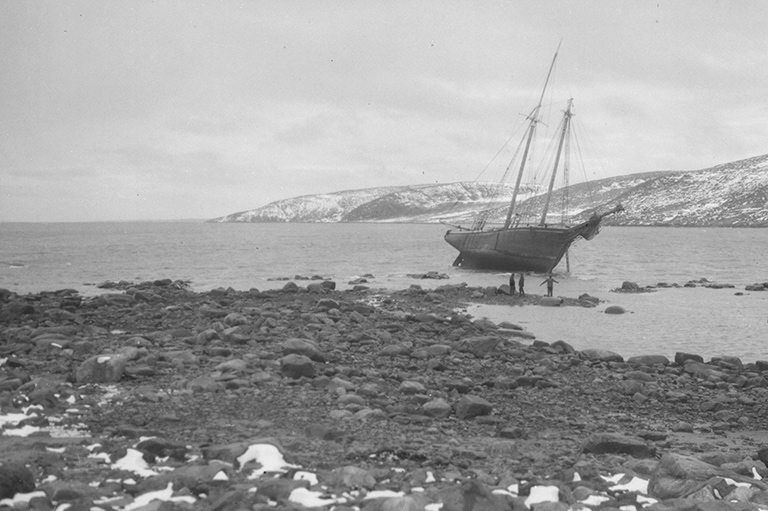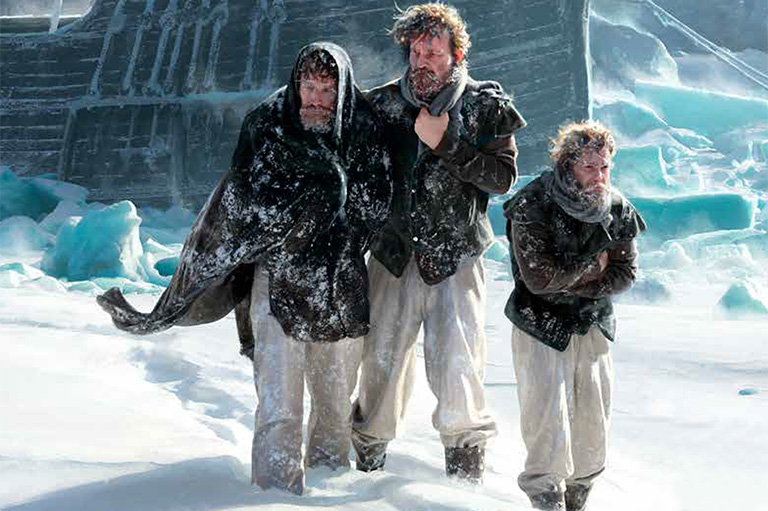Tragic Passage
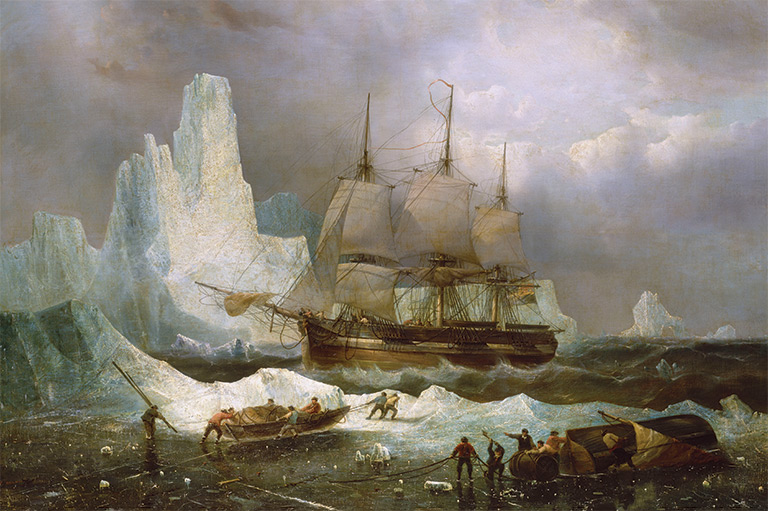
One afternoon in August 1850, as Arctic explorer Elisha Kent Kane stood talking with several other naval officers on the icy, snow-covered shores of Beechey Island in Barrow Strait, a sailor came stumbling over a nearby ridge. “Graves!” he hollered. “Graves! Franklin’s winter quarters!”
Searchers for the lost expedition of Sir John Franklin had finally found what has since become the most famous historic site in the Arctic — the graves of the first three sailors to die during Franklin’s final voyage.

At this desolate spot in 1846, while still hoping to discover a Northwest Passage, Franklin had conducted three sonorous funeral services. Four years later, Kane — a surgeon in the American navy and member of two separate missions to find and rescue Franklin — led his colleagues in scrambling over the ice to the makeshift cemetery. “Here, amid the sterile uniformity of snow and slate,” he wrote later, “were the headboards of three graves, made after the old orthodox fashion of gravestones at home.”
Flash forward 157 years. Late in August 2007, during an expeditionary cruise organized by Adventure Canada, I visited Beechey Island. With a dozen other people, I stood gazing at the graves of those doomed Franklin expedition crewmen. Nearby, a Scottish bagpiper played Amazing Grace amid a light snowfall. As I stood looking at the wooden headboards — worn facsimiles of the original grave markers — what astonished me was not the site itself, but the surrounding absence of ice.
We had arrived here, high above the Arctic Circle, two weeks later in the season than Elisha Kane did — and yet, where he encountered nothing but ice, both in Lancaster Sound and onshore, we found open water and naked rock. This was stunning confirmation of the widely reported impact global warming is having on the Arctic ice cap.
With 7 uniquely curated newsletters to choose from, we have something for everyone.
Satellite images had recently revealed that, for the first time, the Northwest Passage lay open to commercial traffic. This constituted a surprise ending to a centuries-old saga, because experts had generally agreed that a passage across the top of North America would never be commercially viable.
Now, however, business interests are eagerly anticipating the opening of that passage — not to carry real gold from Cathay, but to transport black gold from the Alaskan oil fields, and possibly other goods, too. The projected increase in maritime traffic is raising urgent questions — not just for politicians, environmentalists, and military experts, but also for the Inuit who inhabit the Arctic.
Yet, as I stood at the graves on Beechey Island, looking at the contemporary landscape through the eyes of the early explorers, I realized that for history buffs like me, the opening of the Northwest Passage sheds new light on the epic saga of Arctic discovery. The new accessibility shows that history, geography, and climate are forever intertwined, and provides an unprecedented opportunity for visitors to see the passage for themselves.
My own voyage of Arctic discovery began in 1998 in Cambridge, England. Having landed a fellowship to study at one of the world’s great universities, I had spent the past couple of months ransacking the archives at the Scott Polar Research Institute. One rainy night in my room, I sat reading an unusually lucid account of how Sir John Franklin came to be recognized as the discoverer of the Northwest Passage.
The author observed that the final survivors of Franklin’s 1845–1848 expedition had completed the journey during a doomed march from their ships, which had become trapped in the pack ice off King William Island. He quoted Sir John Richardson, the esteemed naval surgeon and former crewmate of Franklin: “They forged the last link with their lives.”
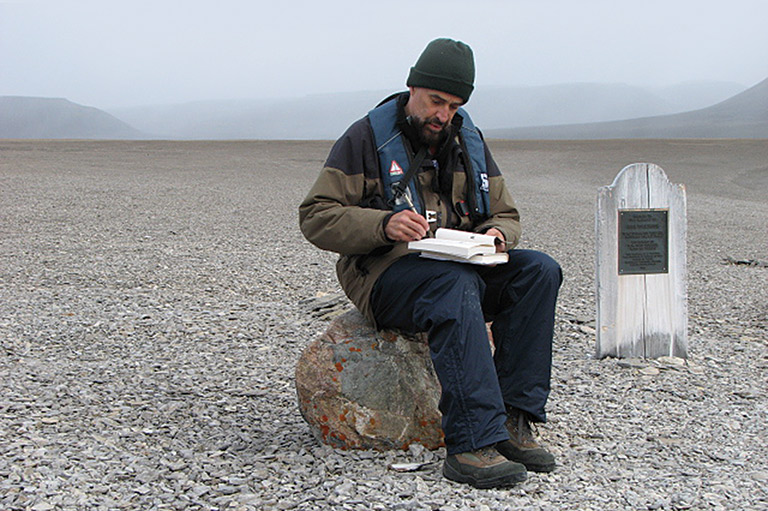
Advertisement
Since leaving Canada, and with the intention of writing a fourth novel, I had internalized the geography of the quest for the Northwest Passage. This enabled me to grasp what Richardson was hiding with his eloquent phrase — that the Franklin expedition had discovered no navigable passage.
In April 1848, with Sir John already dead, probably of a stroke or a heart attack, the desperate survivors of his doomed expedition — half-crazy with scurvy, starvation and lead poisoning — had slogged south over the ice to perish in a region where no nineteenth-century ship could ever hope to pass.
I shook my head at Richardson’s assertion. But then I realized that his falsification of history constituted an injustice against the man who really had discovered the final link in a navigable passage — and that was none other than the neglected Scottish explorer I had been researching for use as a minor character in a work of fiction.
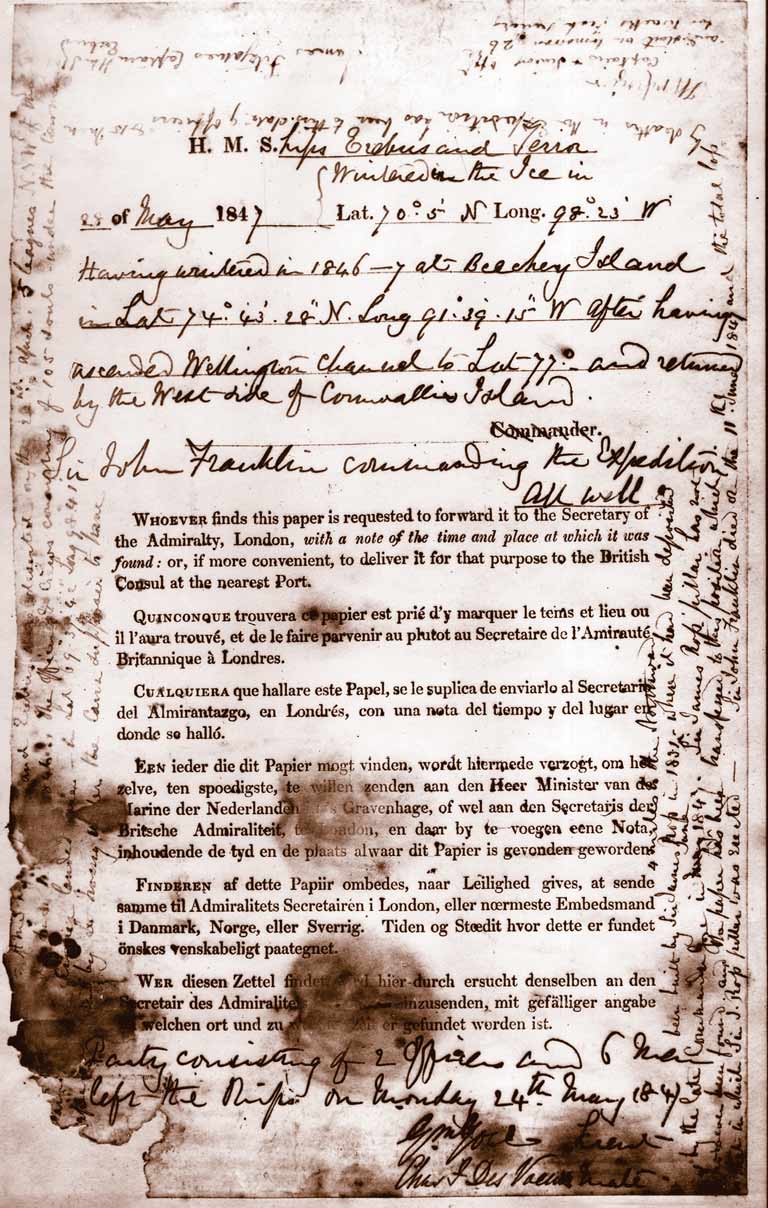
It was John Rae, of the Hudson’s Bay Company, who actually discovered that final link in 1854, when he located a north-south channel running between King William Island and Boothia Peninsula. The Norwegian Roald Amundsen would name that waterway Rae Strait when, early in the twentieth century, he became the first to navigate the Northwest Passage.
That night in Cambridge, when I realized that Franklin’s friends had rewritten history, I leapt to my feet and began pacing. I felt driven to set the record straight, even if that meant abandoning my projected novel to write a non-fiction narrative. I did not anticipate that the ensuing book (Fatal Passage) would lead me to write three more works about the Arctic. I did not imagine that my sense of outrage would drive me to travel to Boothia Peninsula to honour John Rae with a plaque. And I did not even dream that I was embarking on an Arctic odyssey that would engage me for the next ten years.
Arctic exploration is the first great adventure of Canadian history, the touchstone epic that — like the Civil War for Americans — every generation is driven to revisit. Until now, most Canadians have had to content ourselves with simply reading about the fabled Northwest Passage.
The opening of that passage makes possible a different kind of adventure. In the future, history buffs will come in droves to visit various sites. They will come to Beechey Island, Nunavut, where John Franklin buried those three men; to De la Guiche Point, Nunavut, where John Rae discovered the final link in the Northwest Passage; and to Coppermine (Kugluktuk), Nunavut, where in the 1770s the English explorer Samuel Hearne marked a first point on the map of the Arctic coast.
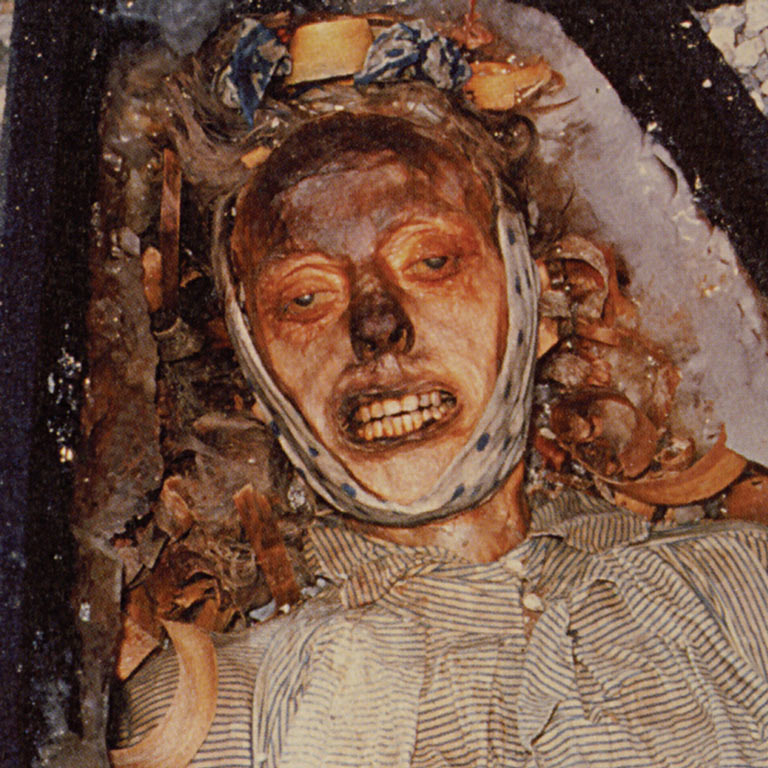
In the autumn of 2007, as the MS Explorer sailed south down Peel Sound, I felt excited and awed to think that we were following the route Franklin took to his doom. Instead of continuing to Victory Point on King William Island, however, where the final Franklin survivors began their desperate, over-ice trek, our ship sailed east into Bellot Strait — yet here, too, I heard the siren call of history.
While researching my third book about the north, Lady Franklin’s Revenge, I had paid special attention to the expeditions that Jane Franklin sent in search of her lost husband. In 1851, Lady Franklin sent Captain William Kennedy in the Prince Albert to search for her husband around King William Island. Kennedy sailed south down Prince Regent Inlet and got trapped in the ice. The following spring, along with Joseph René Bellot, his second-in-command, Kennedy travelled through what is today known as Bellot Strait from east to west by dogsled — and then insisted on turning the wrong way, northwest instead of south.
More than a century and a half later, as we passed through the narrow strait, I found myself marvelling that where Kennedy and Bellot had battled pack ice and blizzard conditions, we sailed through open water and saw not so much as an iceberg. The contrast was striking.
In September 2007, nobody aboard the MS Explorer imagined that this would be the ship’s last northern voyage, and that within three months, while sailing in Antarctica; the double-hulled vessel would hit an iceberg and sink. Most people on board — I speak as one of the ship’s dozen resource people — were far too busy to worry.
Save as much as 40% off the cover price! 4 issues per year as low as $29.95. Available in print and digital. Tariff-exempt!
Every day we went cruising in Zodiacs, sometimes wending through a maze of breathtaking icebergs, other times gliding along a craggy cliff face raucous with birds. We saw walruses, narwhals, and bowhead whales. And twice we saw polar bears at a distance of forty or fifty metres. One of these magnificent creatures, a thousand-pound adult male that stood ten feet tall, gazed back at us, interested but unconcerned, before swinging off to go scavenging along the rocky coast.
On this particular Adventure Canada cruise, we visited a number of Inuit settlements along the north coast of Baffin Island. At Clyde River, population 850, an articulate twenty-year-old, Clark Kalluk, led a few of us around the village. He noted that in this community, husky dogs are not pets but “security guards against the thirty or forty polar bears that will soon come roaming through town.”
Kalluk described how, a few months before, during the long, dark, polar night, he was walking home from a friend’s place when he came face to face with a polar bear. “I turned and ran to the nearest house,” he said, “and the bear followed me to the door.”
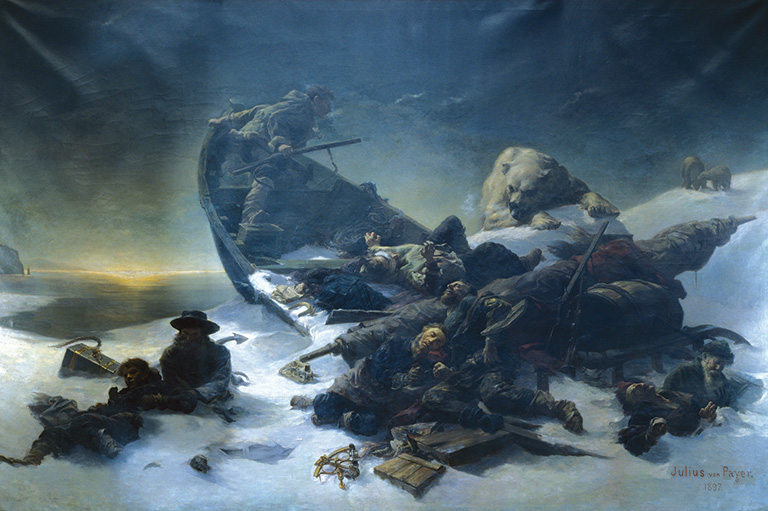
This gave me pause, for I had recently read the journals of Elisha Kent Kane, who vividly described how a couple of polar bears ravaged a well-buried cache of provisions, smashing open iron caskets of pemmican and tossing aside boulders that had tested the strength of three men.
I had seen polar bears at a distance in 2001, when I visited Churchill, Manitoba, while working on a book about Samuel Hearne (Ancient Mariner). With a group of Chipewyan-Dene, Hearne had conducted a remarkable overland journey to the mouth of the Coppermine River. But he had never battled polar bears, which did not begin to frequent the Churchill area until much later.
Those explorers who did tangle with those formidable animals usually entered the Arctic by ship and then got stranded, and I imagined the horror some of them must have felt, as, stranded and starving in a frozen wasteland, they suddenly realized they were being stalked by the Arctic’s deadliest predator. It gave me the chills.
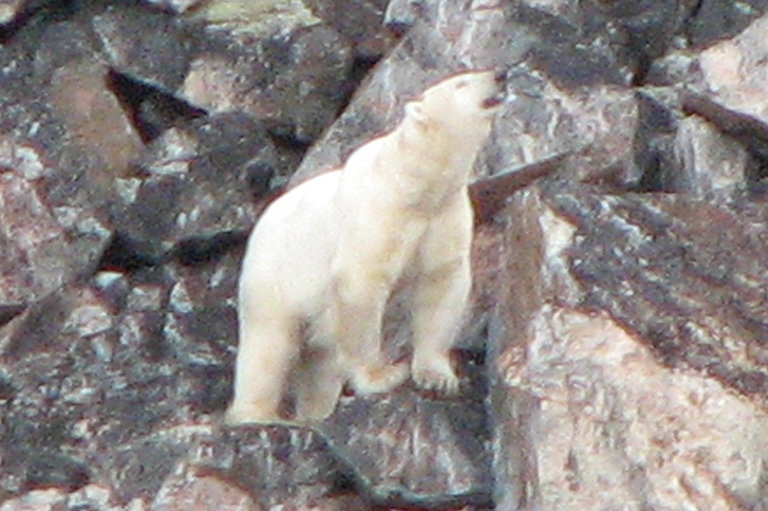
Last year, when I sailed with Adventure Canada, I was working on a book about Elisha Kent Kane (Race to the Polar Sea), the final volume in what has turned out to be an Arctic quartet. So I was thinking about Kane as we left Baffin Island and started across Davis Strait.
I stood on the top deck looking north, towards where Kane, in 1853, traversed the treacherous Middle Ice. He was sailing in search of Franklin and believed the Englishman had become trapped in an open polar sea at the top of the world. Kane himself was about to spend two horrific winters battling cold, dark, scurvy, and amputations. He survived only because he managed to forge an alliance with the local Inuit.
In Davis Strait, for the first time on this voyage, we encountered rough weather. As I stood in the wind and rain, I couldn’t help but think what such a journey would have been like for those early explorers.
Advertisement
The Fort Ross Motel
by Sarah Minogue
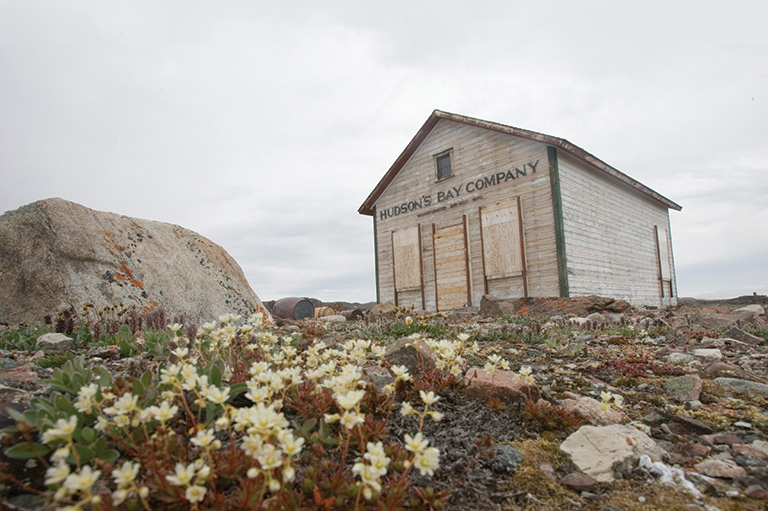
Gripping onto the cold wet plastic of the dinghy that transports me to Somerset Island, I scan the black shoreline and spot our destination two small white buildings gleaming under a full moon.
This is the old Fort Ross trading post, which hosted a key event in the history of the Northwest Passage. It was here, on September 2, 1937, that the first modern day east-west trade took place in the passage. Two Hudson’s Bay supply ships — the Aklauik and the Nascopie met just east of Fort Ross in Bellot Strait, a waterway that is the meeting point for the Atlantic and Pacific oceans.
Built by the Hudson’s Bay Company in 1937, the post was abandoned five years later after thick summer ice prevented re-supply for two years in a row. The first parachute jump north of the Arctic Circle took place here in 1943, when the Bay dropped in a man to determine where a plane could land to fetch the last Bay manager and his wife.
In more recent years Fort Ross has taken on a new life as a stopping point for Arctic travellers, including our crew of seven on a recent sailing trip aboard the Jotun Arctic.
Disembarking from the dinghy, we follow a pathway lined with white painted rocks that lead to the abandoned house and trading post. The former has been laid waste by polar bears while the latter — fortified with sheets of plywood covering the windows has been outfitted as a survival shelter.
Inside the post, the original wood floor barely creaks, though it was laid down seventy years before by a Hudson’s Bay ship crew in a rush to get out before the ice came in. Lighting up a kerosene lamp, we see bunks and a diesel stove, as well as some canned beans, Dad’s cookies and a deck of cards.
Of particular interest are the stories people have left behind. A logbook dubbed the “The Fort Ross Motel Guest Register” starts in 1991 and contains entries from an assortment of global citizens, such as Chilean kayakers and Scottish anthropologists.
In 1997, someone wrote: “Today the windows were broken, we have taken some food, dry and cans. We would like to give our genuine thankfulness to whoever has left the food. ”
Another, more poignant story, is told in a small blue prospector’s notebook, found wedged behind a coffee tin. It contains the bullet-point autobiography of a man who moved north in a bid to beat his demons — the “goin’ north” story writ small.
“Forty-five to present — last four years — jail — living on my own, giving daughter and her mom as much support as I can. Too much booze affecting my credibility as a worker. Physically and psychologically worn down. ”
His name, written in block letters on the cover, is there for anyone to see. And with more and more cruise ships offering transits of the Northwest Passage, more visitors are likely to read his story, as well as all the other travellers’ tales left behind at the “Fort Ross Motel.”
The MS Explorer, a purpose-built expeditionary vessel, displaced 2,400 tons. That made it small in comparison with today’s passenger liners. Yet Franklin’s two vessels, the Erebus and the Terror, were far smaller, at 370 and 326 tons respectively. And Kane’s Advance, at 144 tons, was not even one-tenth the size of the ship on which I stood.
The idea of challenging these choppy waters and worse, far worse, in the Middle Ice, in such a tiny vessel ... well, I could only shake my head. What had Kane been thinking? In general terms, of course, I knew the answer: He was hoping against hope that he would find that open polar sea with some Franklin survivors in it — a discovery that certainly would have etched his name in the annals of exploration. But then, as I hung on against the blowing rain, I asked myself a tougher question: What would Kane and the other explorers think if they could stand here beside me now? Certainly, they would marvel at the size and comfort of this modest ship. Three-course meals, private bathrooms with showers, Zodiacs in which to cruise and go ashore: amazing! And what safety, what security!
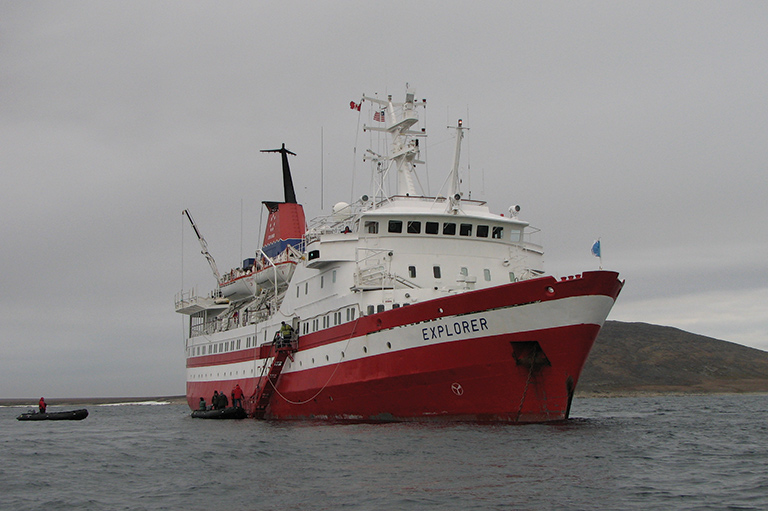
For centuries, explorers had sailed into a vast blank space, braving the white, booming emptiness with nothing resembling a Global Positioning System, and with no hope of communicating with the world, knowing they would remain isolated and alone, reliant solely on themselves, for months and even years at a time.
Now, to see the Passage conquered so completely, with tourists laughing and chatting as they walk across the tundra in regions where the great Arctic explorers endured starvation, scurvy, and the amputations of toes and fingers — the mind boggles.
With the storm-tossed Explorer bucking and heaving, and my cozy cabin below decks becoming ever more alluring, I thought of the sites we had visited and would yet visit on this voyage — accessible locations that were once almost unreachable, where explorers had frequently suffered and died — and I felt that, as their beneficiaries, we have not done nearly enough to mark those spots.
The opening of the Passage gives us another chance. We have a new opportunity to commemorate the explorers who pursued the dream of conquering the Northwest Passage — the dream that has only now, after so many centuries, become a reality. Surely the time has come?
While we celebrate Earth Month every April, it's important to remember our impact on nature and the environment every day. The First Nations, Inuit and Metis of Canada understood the importance of living in harmony with nature, and shared that knowledge with new arrivals as early as the 15th century.
If you believe that stories of climate and nature, and their impacts on early Canadians, should be more widely known, help us do more. Your donation of $10, $25, or whatever amount you like, will allow Canada’s History to share Indigenous stories with readers of all ages, ensuring the widest possible audience can access these stories for free.
Any amount helps, or better yet, start a monthly donation today. Your support makes all the difference. Thank you!
Themes associated with this article
Advertisement

